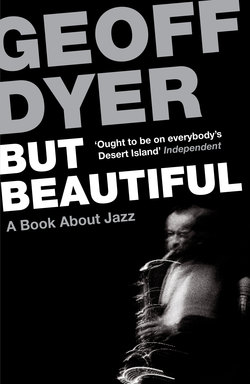Читать книгу But Beautiful - Geoff Dyer - Страница 7
На сайте Литреса книга снята с продажи.
PREFACE
ОглавлениеWhen I began writing this book I was unsure of the form it should take. This was a great advantage since it meant I had to improvise and so, from the start, the writing was animated by the defining characteristic of its subject.
Before long I found I had moved away from anything like conventional criticism. The metaphors and similes on which I relied to evoke what I thought was happening in the music came to seem increasingly inadequate. Moreover, since even the briefest simile introduces a hint of the fictive, it wasn’t long before these metaphors were expanding themselves into episodes and scenes. As I invented dialogue and action, so what was emerging came more and more to resemble fiction. At the same time, though, these scenes were still intended as commentary either on a piece of music or on the particular qualities of a musician. What follows, then, is as much imaginative criticism as fiction.
Many scenes have their origin in well-known or even legendary episodes: Chet Baker getting his teeth knocked out, for example. These episodes are part of a common repertory of anecdote and information – ‘standards’, in other words, and I do my own versions of them, stating the identifying facts more or less briefly and then improvising around them, departing from them completely in some cases. This may mean being less than faithful to the truth but, once again, it keeps faith with the improvisational prerogatives of the form. Some episodes do not even have their origins in fact: these wholly invented scenes can be seen as original compositions (though they sometimes contain quotations from the musicians concerned). For a time I worried about whether I should indicate where I had someone in this book saying something he actually said in real life. In the end, by appeal to the same principle that guided all other decisions in this book, I decided against it. Jazz musicians frequently quote from each other in their solos: whether you pick up on it or not depends on your knowledge of the music. The same thing applies here. As a rule assume that what’s here has been invented or altered rather than quoted. Throughout, my purpose was to present the musicians not as they were but as they appear to me. Naturally, the distance between these two ambitions is often very great. Similarly, even when I appear to be doing so I am not describing musicians at work so much as projecting back onto the moment of the music’s inception the act of my hearing it thirty years later.
The Afterword picks up and expands some of the concerns of the main body of the text in a more formal style of exposition and analysis. It also offers some reflections on developments in recent jazz. Although it provides a context in which the main body of the text might be seen, it is supplementary rather than integral to it.
